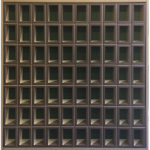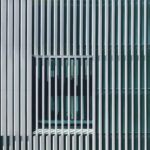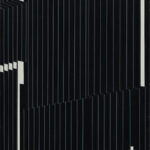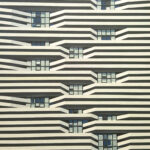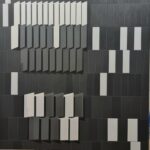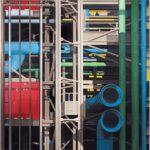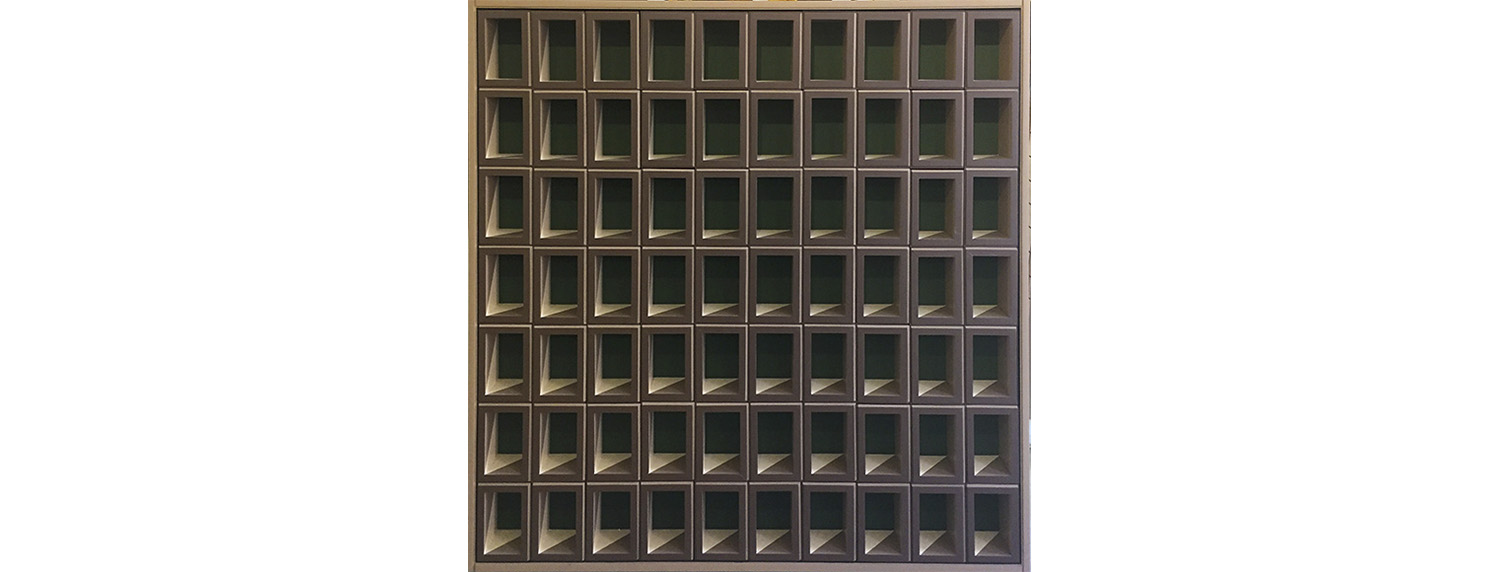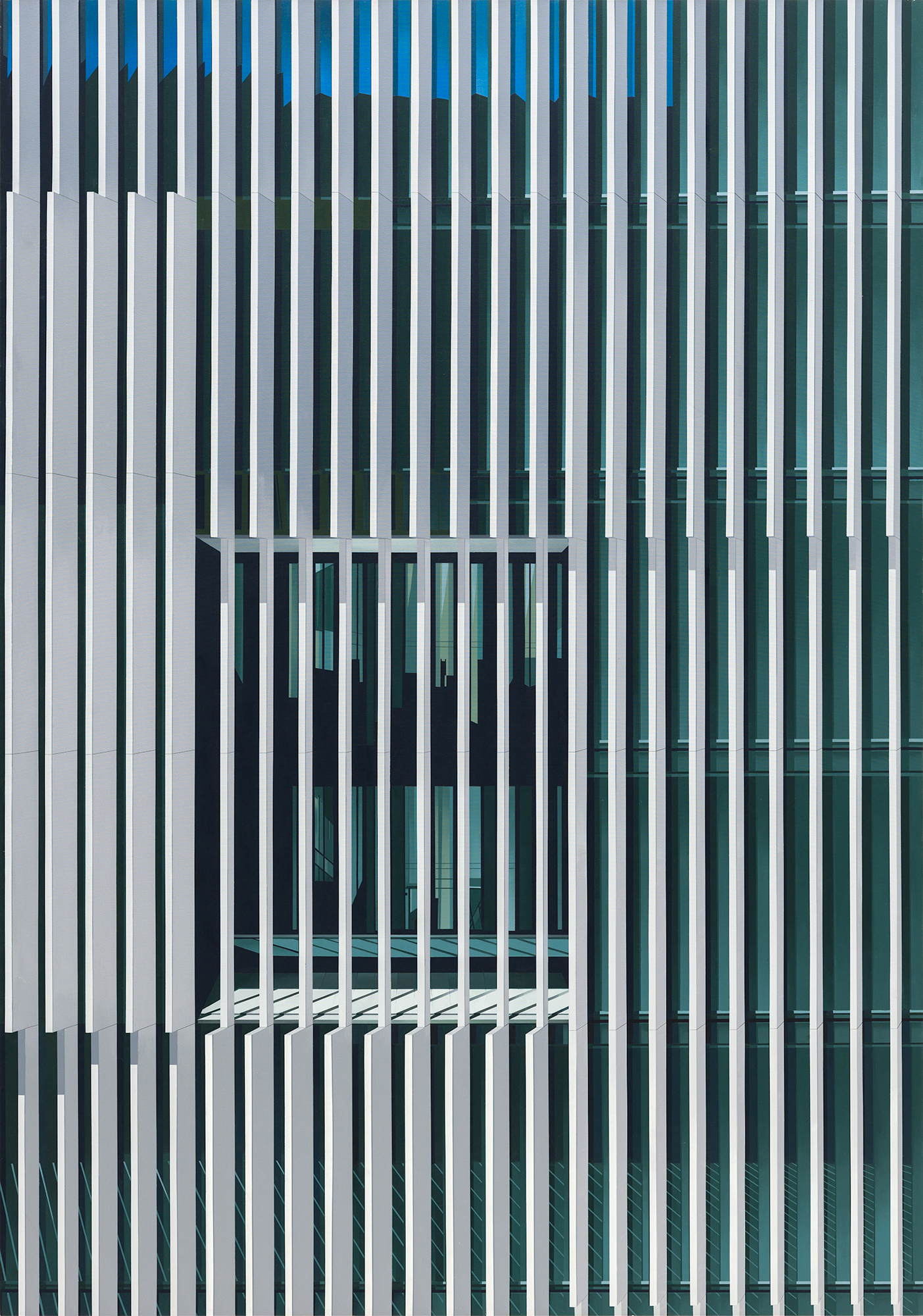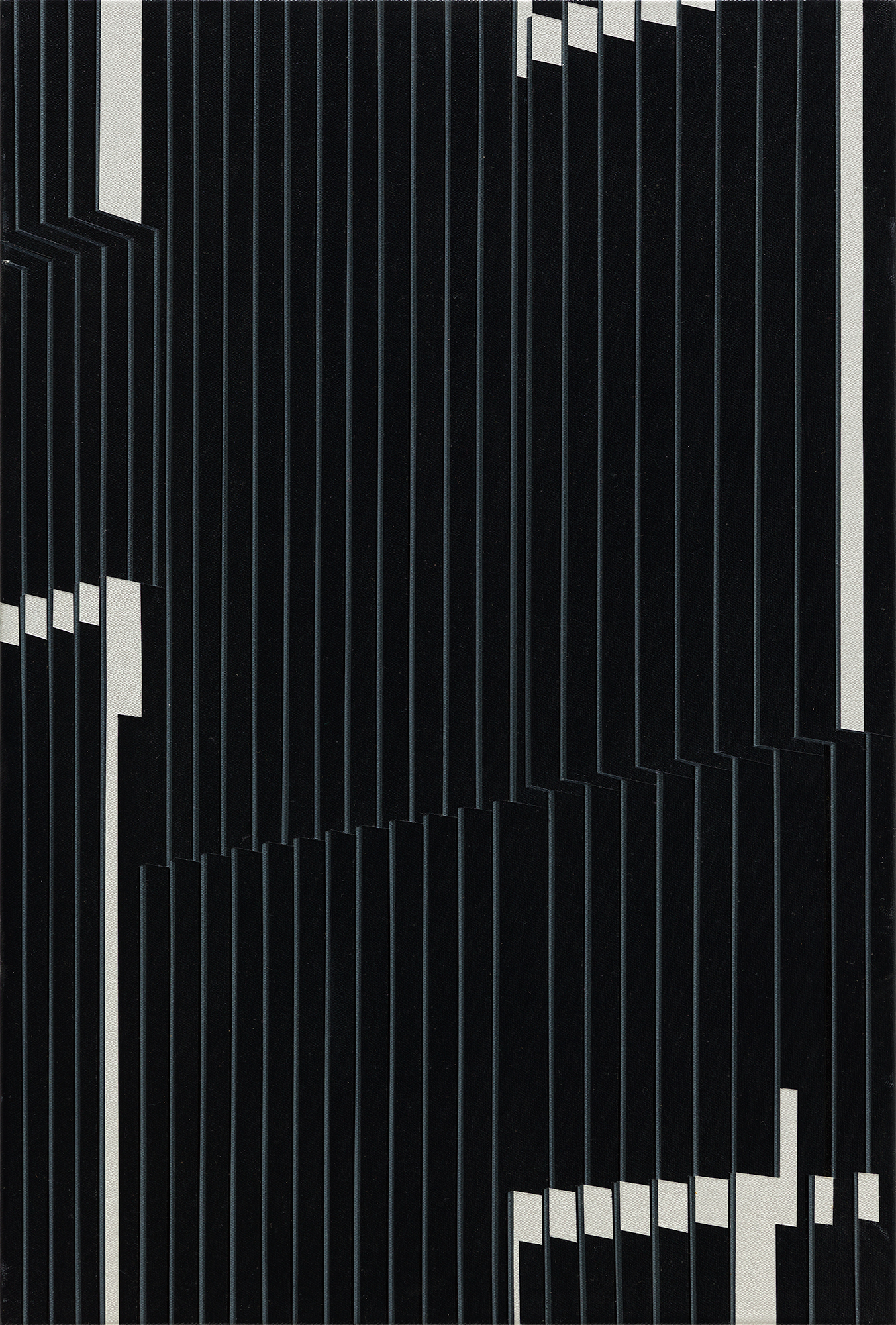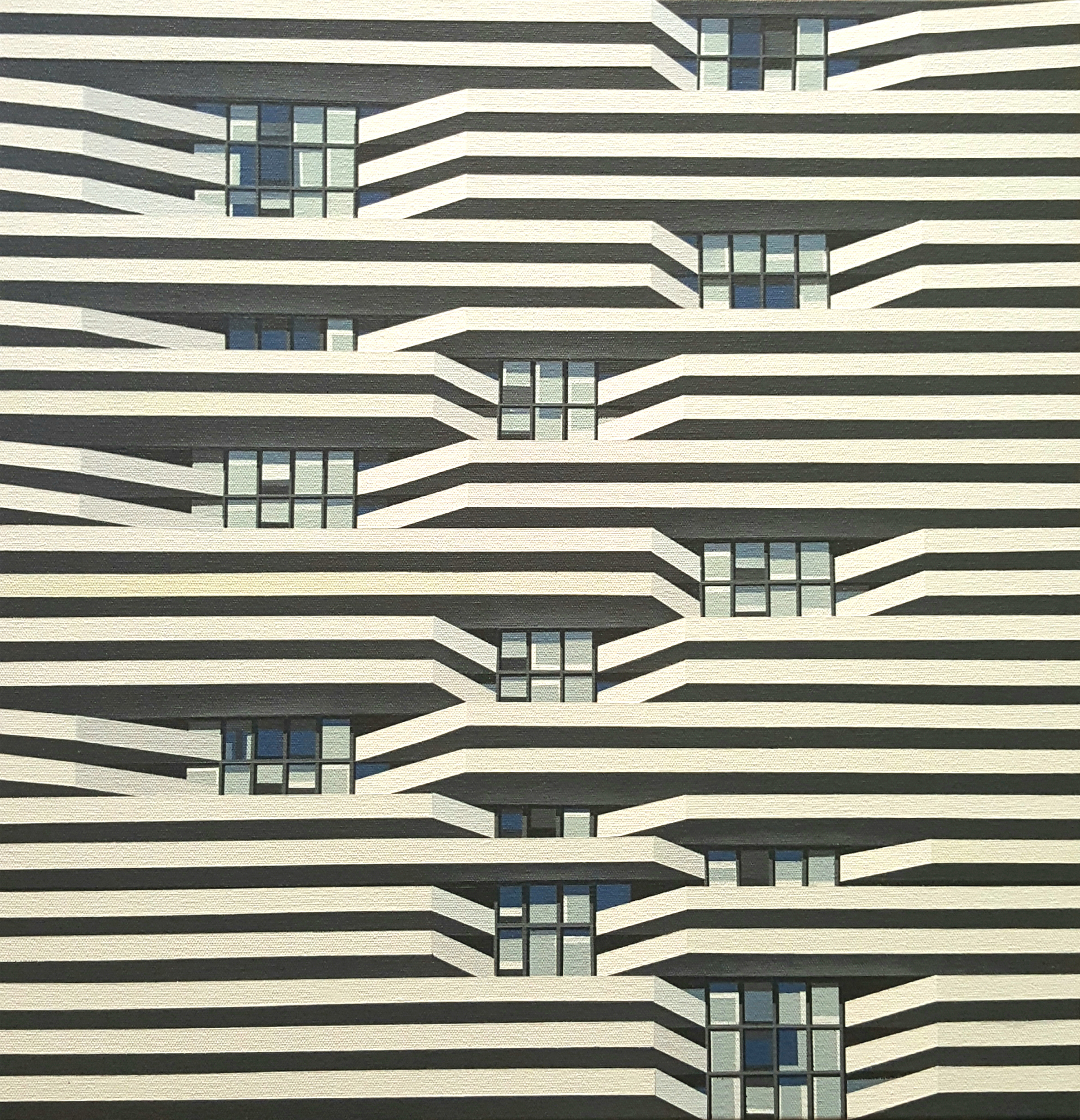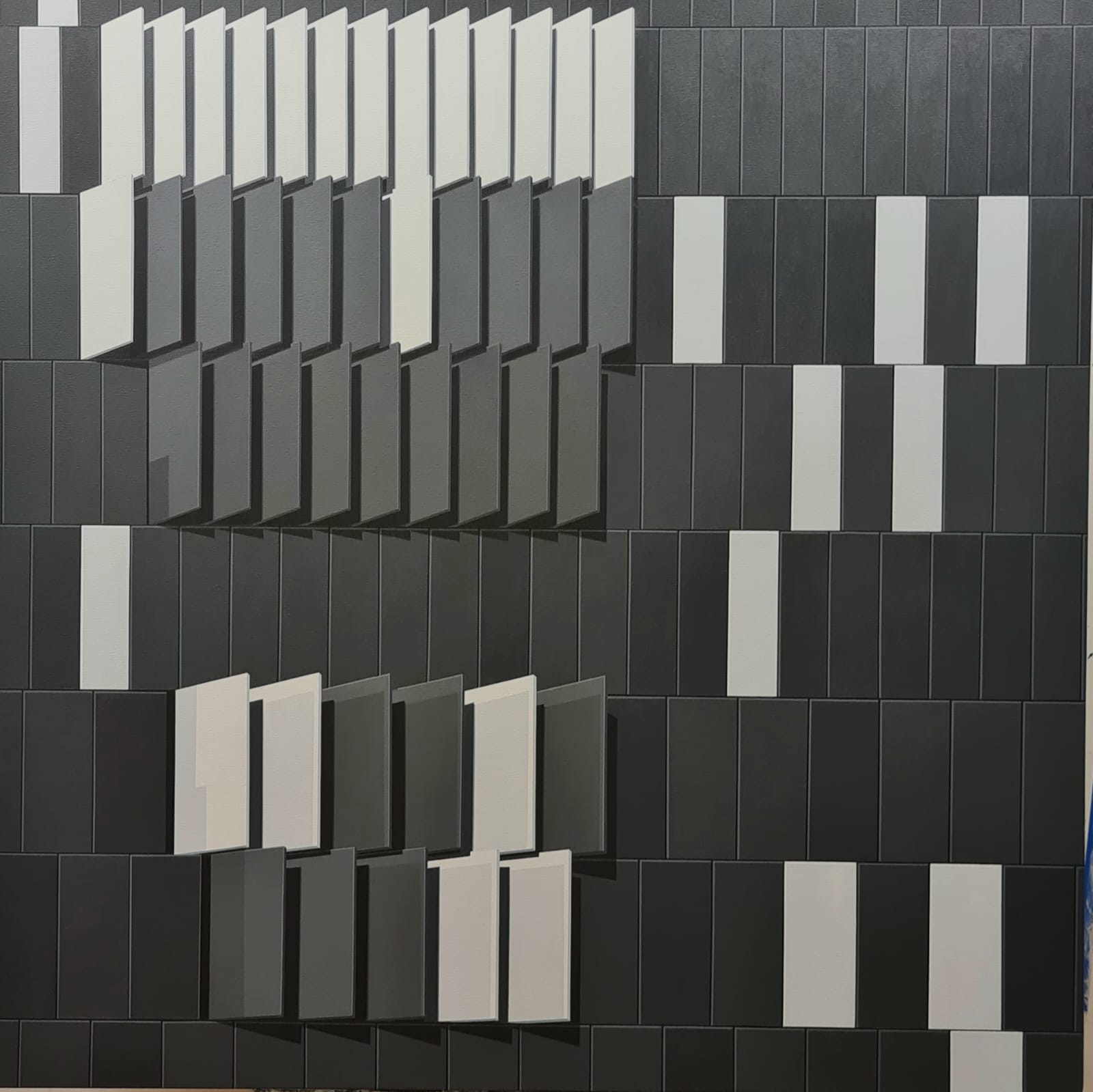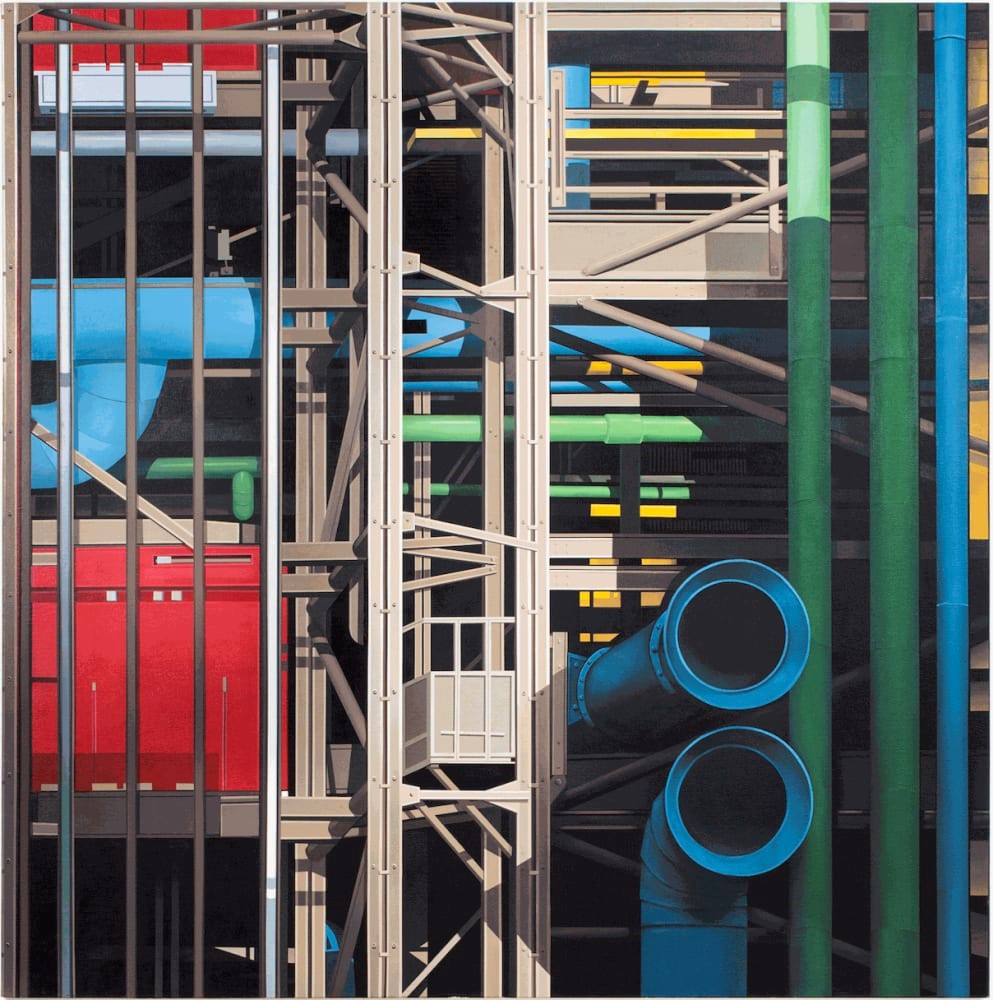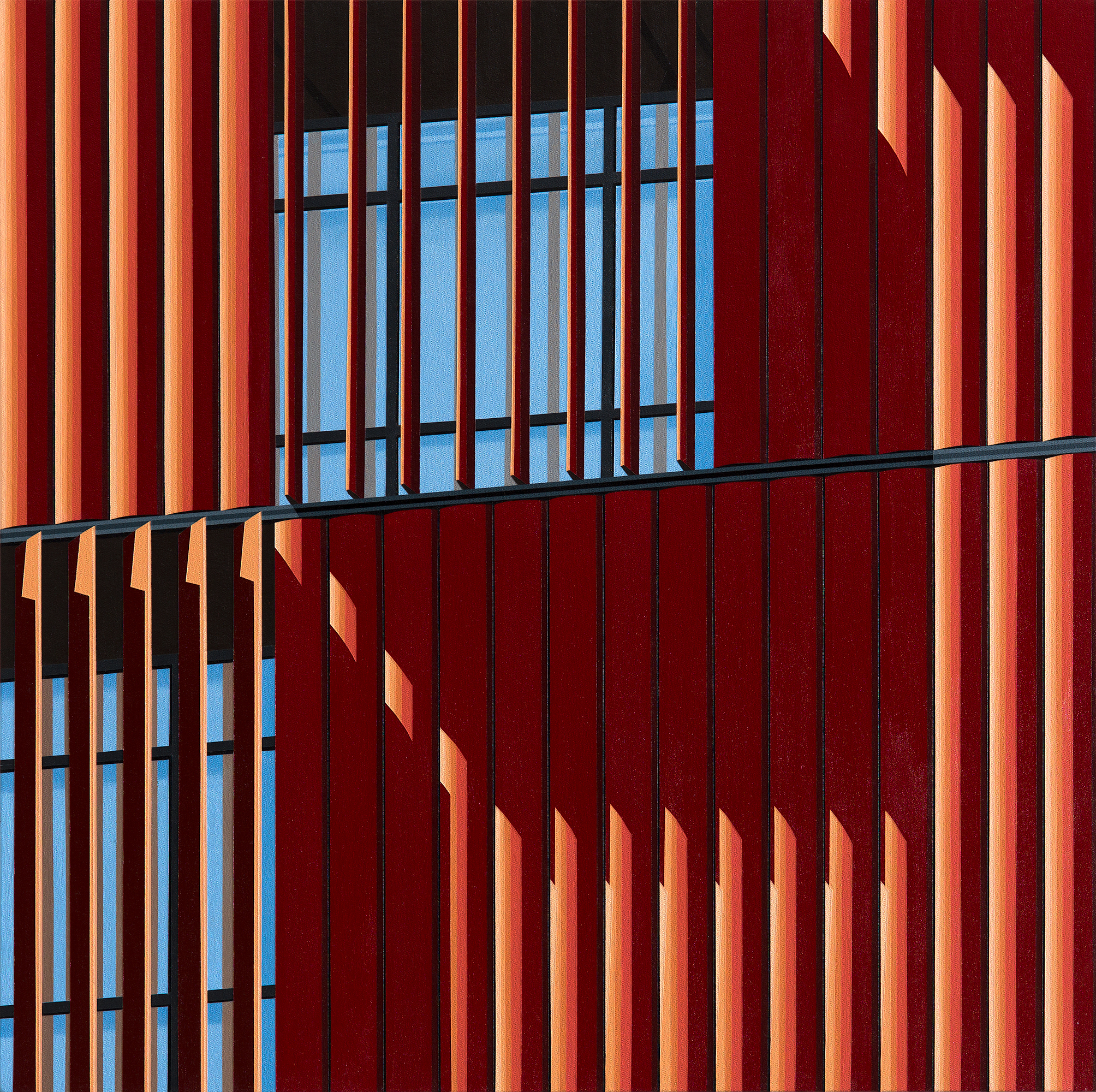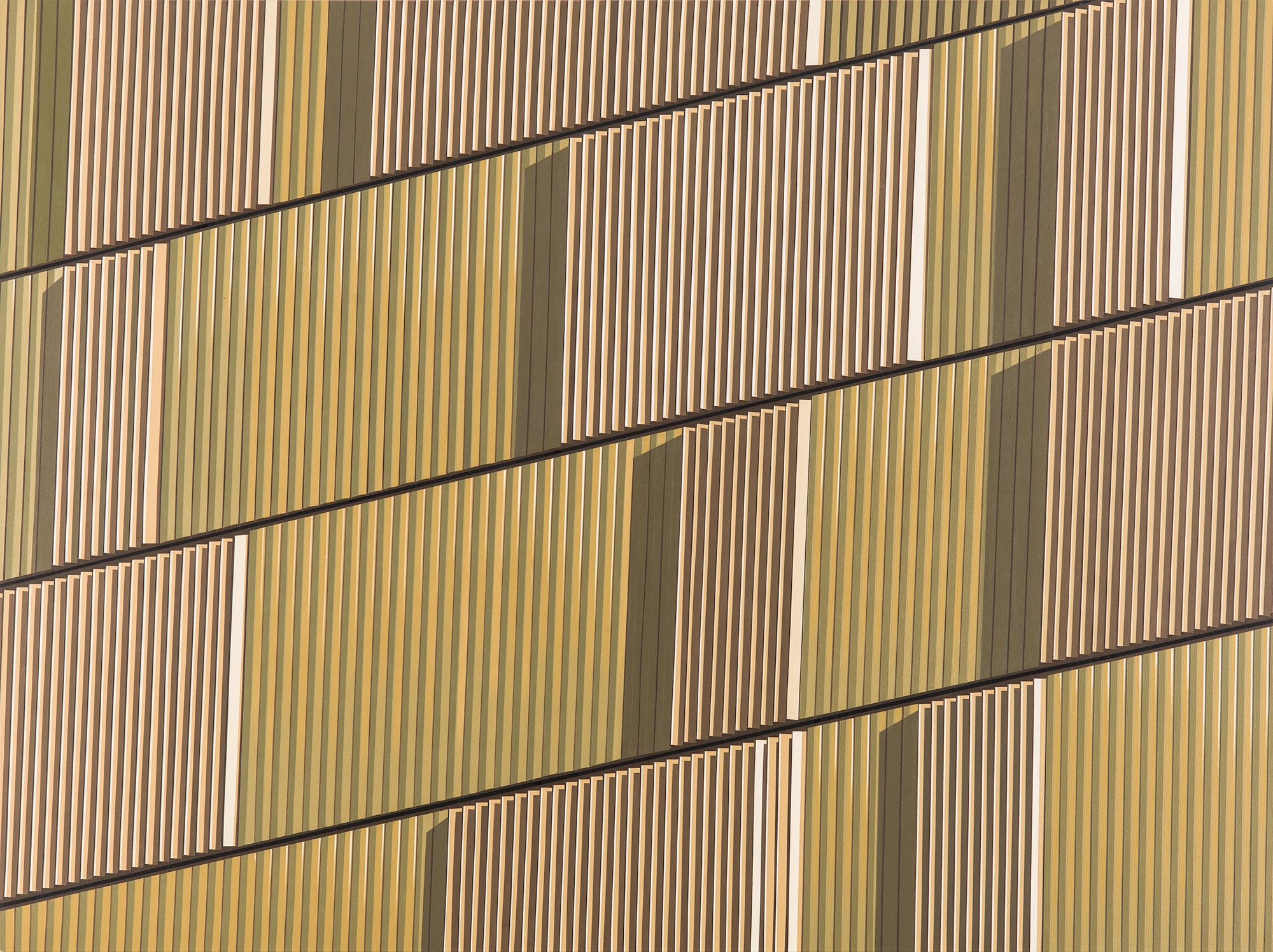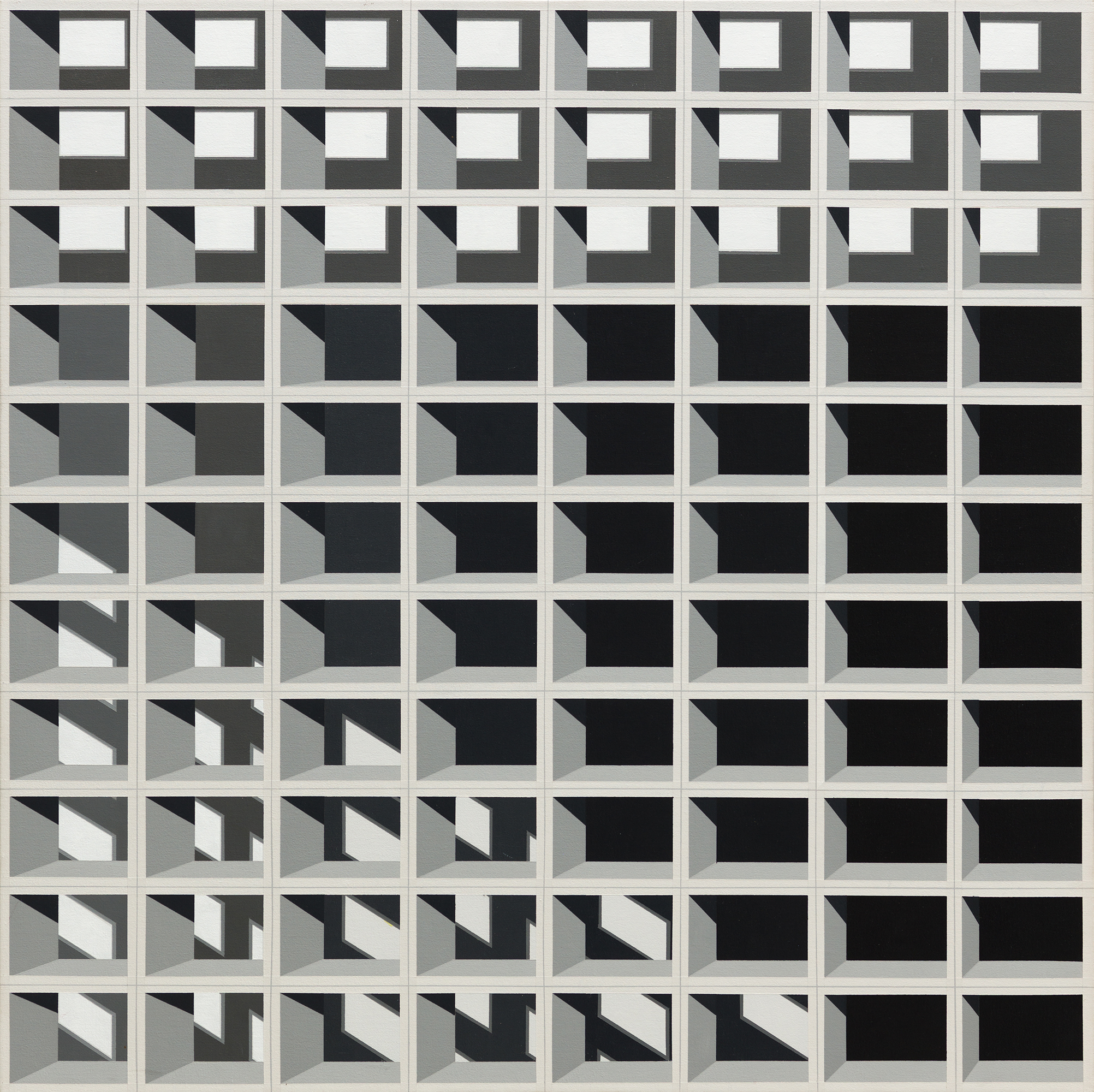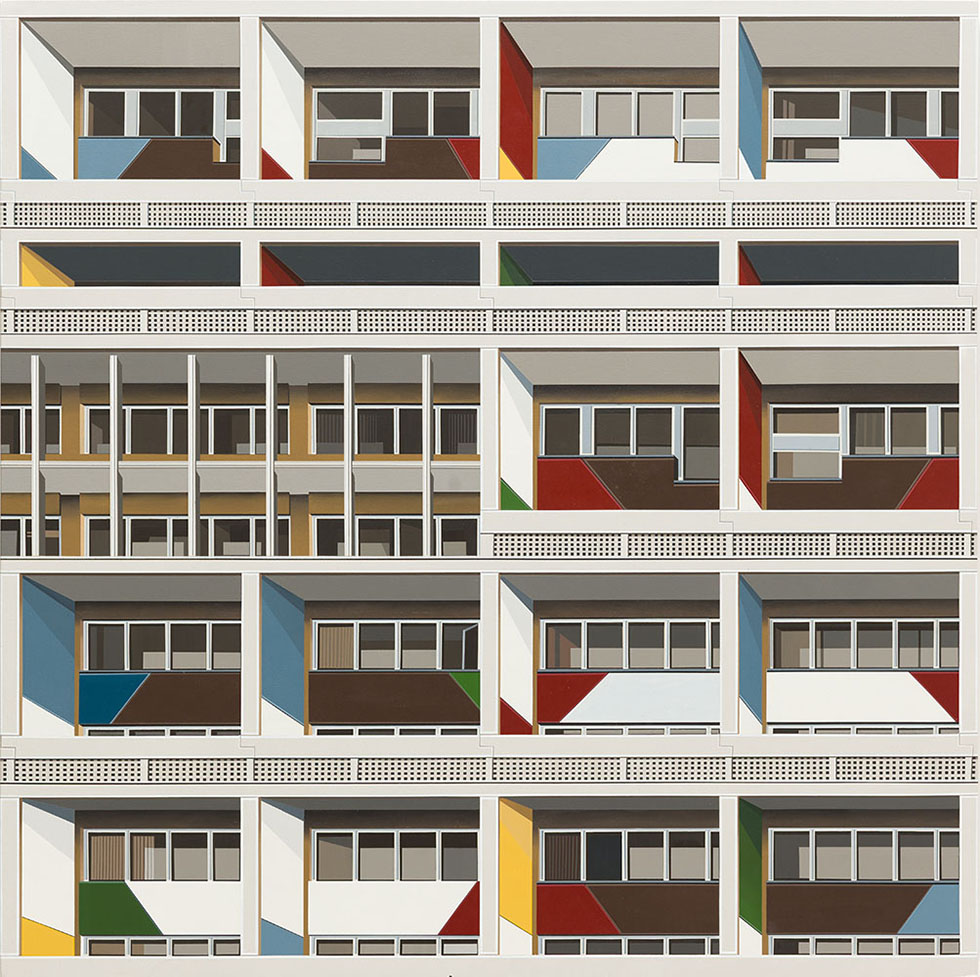Great part of your pathway has as its theme the human bodym or its fragmentation, with special emphasis to the heart, interchanged in its narratives by preparations that express a language of a childhood or a perverse life, with unusual figures, until reaching the urban, where the ilusion of the real, the game of forms and colors, by its incidence of light and shadow, composition and combinations, take them at some moments to place the painting in tridimensionality, presenting it as objects. Representation work, the works have photography as a basis. Not a photography taken at random, but prepared in its scenery for such, which takes us to be before works, whether figurative or geometric, by not searching for reality itself, though strictly connected to the real, in an art with an origin essentially in the painting, art that started critic, ironic, of strange beauty by showing the trivialization of life and death, of pleasure and pain, with a vision that put on the foreground the obsessions, fetishes, exceptions, going through the symbolic, and with quite precise humor dealing with all of this, having as a thematic what the critics describe as seeking to represent erotic, religious and kitsch aspects.
Hildebrando de Castro was born in Pernambuco, but lives in São Paulo.
How did the desire to be an artist arise and, with it, being an autodidactic, the targeting, the discipline, the commitment to reach the objective of this performance? You could even remember 85/86, when you were already being awarded in exhibitions. Talk a little about this beginning, your sensitivity and dedication to reach your objective.
I have a cousing who is a set designer and inspired me a lot, although he doesn’t know that. Everytime we used to visit him was a joy for me, because he used to draw really well and always painted my portrait. I thought that was simply brilliant.
I spent a good part of my childhood and adolescence looking for references and tried to represent them. At 11 years old, I was given my first painting kit from my brother, Elias: oil paint, paint brushes and canvases. I painted some inspiring canvases on the folklore, and decided that I would be a painter.
At 16 years old, I left school and decided to look for a job. I came to São Paulo, where I got an internship at an advertising agency. I imagined that I’d found right there something related to art. Then, I met Matty Vitart again, a fantastic drawing artist and painter friend of mine, I was really impressed with her work, which influenced me for the longest time. After the internship, I went back to Rio and started to work at Bloch as an art finisher, and I fought hard not to become an illustrator, because I thought it could interfere in the development of my work. In the beginning of the 80’s, I worked as a freelancer and, therefore, had more time to dedicate myself to drawing. That’s when I met the art director Tadeu Valério, from EMI-Odeon, we became great friends and, for a long time, co-workers. I may even say he was my first patron.
After some years working as a visual programmer for record sleeves, I spent two years in Paris, traveling throughout Europe. By then, I only worked with color pencil. I felt the need to expand my work more and I started to experiment with the color pencil with dry pastel crayon, and the result was amazing.
Back to Brazil, by a strong influence of a type of language developed at the time, my work suffered another turning point. More freely, I gave myself the right to paint, using acrylic paint, without concerns with technical rigor. I still didn’t have full mastery in painting.
I participated in some exhibitions, won some awards and was invited to participate in the Drawing Triennial in Nuremberg. On that same occasion, I made my first individual exhibition abroad, in Munique, at Irene Mader gallery.
Back to Rio, I started looking for a gallery that would represent me. That’s when I met Franco Terranova, whom I call “my father in art”. We worked together until the closing of Petite Galerie.
At the very end of the 80’s, I went to New York and, once more, my work suffered a turning point: I let the drawing freer, went on to the more realistic drawing in pastel crayon and started, then, to photograph. I’d compose my own scenes with real characters, usually my friends, such as: Numa Ciro (dear partner in several phases of my work), Teuda Bara, Michele Matalon, Claudia Odorissio, Edith Uhl e netos, Reston, Bete Coelho, Lola, Renée Gumiel and others who would agree to pose for my work.
In the beginning of the 90’s, I decided to look for a gallery in São Paulo, period when I met Marcantonio Vilaça. We worked together until his death, in 2000.
In 96, I came back to New York, where I lived until 2004.
By the end of the 90’s, my drawing made me appeal to painting, due to the glazes and the limitations of drawing on paper. Then, I spent three years dedicating my time entirely to learn how to master the oil-painting technique. I started with paintings in blurred black and white, and only in 2006, I felt the need of color in painting, and I confess that was a new challenge.
In 2008, by an invitation of a great friend, Sérgio Carvalho, I went to Brasília for the first time and I was really impressed with the relationship between space and light in architecture. I remember I stopped in front of the annex building of the Chamber of Assemblymen, and stayed photographing it for ours. Its front, made entirely of windows with brise soleil, impressed me. The 4-p.m. sun, upon reflecting on the brise, would multiply it forms and tones. I was wondering that it would be as an infinite symphony of compositions with the most miscellaneous tones at every opening and closing of windows, everyday. This was my first contact with geometry. I took two years to take over it. I considered photography, but it wouldn’t be bringing anything new to my work with that. In painting, it looked impossible to me working with so many straight lines. After taking to friends, Valdirlei Nunes, Rubens Mano and Carlito Contini, I decided to risk it and try the challenge. Consequently, as of 2010, my work suffered another turning point. Although it remained in the figurative, the challenge then was to compose an abstract geometry, that is, to work with geometry without using it for representation purposes.
This artistic beginning has its starting point in drawing, graphite and color pencil, in linear graphic drawing. Then, came the pastel. And in it, you achieved an excellence in development. But even achieving a work so well performed, from 2000, you started to paint with oil and a new learning by yourself. What led you to clear the pathway of a technique and go adventure yourself in another? What benefits did the oil bring to your painting?
As I mentioned, the drawing itself led me to painting. When I went on to work with black and white (tones of gray), the pastel began to reveal itself as limited. The glazes not always worked as those made in colors. It took a lot of dedication to reach a point of satisfaction again, which I had achieved with pastel. I needed three years to achieve the mastery in painting. This time, it wasn’t about a painting without technical compromise as the one I was developing in the 80’s and, in addition, oil became really fascinating in its possibilities.
Your works have photography as a basis. Not a photograph taken at random, but prepared in its scenery for such. What can you talk about this issue? When did you start to photograph? Has it emerged already with a basis for a personal mark of artistic creation, this photography which is subsequently manipulated an turns into painting, a representation of the representation when executing it this way? Today, do you use the video, movie or only personal photos for your creation?
Yes, my work has as a basis the photographic reference. First, by the convenience of having your reference always ready. The fact that you need a model posing for hours and days doesn’t facilitate any work, but with a photograph, it becomes possible, in addition to providing the desired framework and having the light controled. When I used to work with models and situations, I’d make photos in black and white to paint in colors. I like the dramatization of the light more in the black and white photo. In most of the times, I work with my own images. I rarely use images of appropriation, but it depends on the work. For example: I created a series of paintings about catastrophes and landscapes where I used internet images and movies images. Today, every image of architecture are made by me, but I don’t consider myself a photographer. Photography is always used as a strategy.
In your career path, there is the theme of human body, or parts of it in fragmentation, with special emphasis to the heart, more human beings and models, to talk about a childhood or a perverse life, with unusual figures, until reaching the last exhibits and the illusion of the real. Would it be possible to determine as work phases or would those be interchangeable by its narratives, executions and the symbolism they express? How did you get to your themes?
My work has always been figurative and, as an autodidactic, I felt the obligation of going through all pathways. In the beginning, I would master the human figure and speak through it. It went on like that until the 90’s, when the figure became, then, fragmented. In 95, the hearts came in an exhibition in the CCBB – Rio de Janeiro. To the hearts, I started to add parts of the body, always composing a narrative. The fragmented parts were of dolls, that came to replace the models to make a parody of the real life.
Back to the portraits, I initiated the phase in black and white. Landscape would always fascinate me, mainly the ones that were on the background of classical paintings. I painted some inspired on the showcases of the Natural History Museum of New York, as well as a series of waterfalls.
Back to Brazil, in 2004, I went to the Northeast region for a while and started a new series, through which I’d come back to the fragments and made a parody between embroidery and scar, foldings and time marks. I had a lot to see with this come-back to our country.
After a few years dedicated much more to painting, I decided to go back a little to the pastel and I returned exactly to the point where I’d left it: the dolls. Right after, comes a series of catastrophes in painting, and, already going into urban landscape, which was replaced by the work I’m developing recently. The connection between one series to the other is due to my desire of changing and being able to surpass myself.
The criticism states that your thematic seeks to represent erotic, religious and kitsch aspects, and it is a work of figurative representation. How are these observations received by you? Are they really relevant to your work?
Yes, my work has always been allusive, ironic. Today, light and shadow are leading figures, although it is still not possible to define the place of a narrative through these opened or closed windows. But I assure that in this current work, though figurative, I seek more abstraction than representation.
Is there a rupture of this path with the last exhibits, Ilusões do Real? Or is it that this game of forms and colors through the incidence of light and shadow, the composition and combinations, and the photographs are not present in the beginning? And in this last phase, could you talk about the arrival of objects, the painting, going to the tridimensional, even maintaining over the surface of a wall?
Light has always been the central concern of my work. I like to play with the illusion of tridimensionality, but I need it to be fit perfectly to the proposal. That’s what happened with this series about the architecture. As the painting itself seems tridimensional, it wasn’t hard to reach the objects (surface textures). The wonderful miniaturist Humberto Jara, who works very well with wood, helps me to manufacture objects. Then, I execute the painting and pick the colors, lights and shadows, composing the image.
As a work of representation, whether figurative or geometric, because it doesn’t seek reality in itself, but this as an origin for the painting, how do you see the setting connecting the real and your art, even more containing in it, by your drawing, your lines, an extraordinary execution of what we see as reality? Is it purposeful this real in painting, confounding the spectator and their vision, that they have in the reality being represented there?
Even if it is a realistic, allusive, referring painting, I always seek to leave a margin for the imagination of the observer.
You started graphic (there is your passage as designer, visual programmer), critic, ironic, of a strange beauty to show the trivialization of life and death, of pleasure and pain, with a vision that put on the foreground the obsessions, fetishes, exceptions, going through the symbolic, and, for me, with a very accurate humor (black humor?) when approaching everything. Do you still feel your work inside this pathway?
So, as I mentioned earlier, in the geometric composition, the light and the shadow are leading figures instead of the ironic narrative.
How is it to create a figurative painting, with you personal characteristics, having as a basis the photography, of objective registry, narrative painting, in a period where the fine arts go to installations, videos, performances? Still on the subject, how do you see art today, in Brazil and in the world?
Everyone should follow their path, independently from the trends. This is what I believe. This history of the new is already very old. What I know is that it isn’t easy being an artist at any time. We, artists, have to learn how to live with the everlasting anguish of idea and identity. Art is, and forever will be, fundamental.
In your pathway, there is a period of United States and France. You were born in Olinda, Pernambuco, and lives in São Paulo. What do these places in your reality bring to your painting? Uneasiness? Challenge? Inquiries? And what does each one represent for your life experience, born in 1957, and as an artist, with more than 25 years of career?
I’m a little more than the double of 25 (laughter). I think the tension of being a young or an older artist will always be the same.
I was born in Olinda, Pernambuco, and taken (still a baby, by my parents) to Rio de Janeiro, where I spent most of my life. Today, I live in São Paulo and feel at home. The places where I’ve lived and those where I spent some time were important in my education and reflect in many ways in my work.


